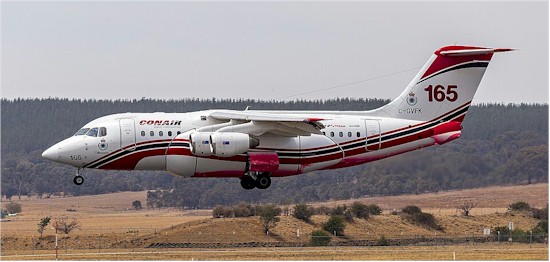Women in Aviation
|
Why Canada hosts more old passenger jets than any other country — by far
Editors' Note: Regular NetLetter readers will know that one of our favourite topics is the older B-737s that continue to be used by airlines such as Air Inuit and Nolinor Aviation. We came across this excellent story on why these aircraft are still in service and the unique challenges of operating in Canada's north.
Source: www.ctvnews.ca/canada
by Christopher Reynolds, The Canadian Press
Each morning, travellers and cargo take off from Montreal’s Trudeau airport for a 1,600-kilometre flight to Puvirnituq in northern Quebec aboard a nearly 50-year-old Air Inuit plane.
This seasoned Boeing 737 previously cruised the skies above Europe and Central Africa for now-defunct carriers in France, Gabon and the Congo. But now its trips are all-Canadian, shuttling people, food and building materials between the country’s second-biggest city and a village of 2,100.
The aging aircraft is no outlier in Canada, which plays host to more old jets deployed for passenger service than any other country. Their age can pose challenges for maintenance and fuel efficiency, while others question the safety of second-hand haulers, but operators say they are ideally suited for commercial flights to remote destinations.
Thirteen of the 30 oldest jets in the world carrying travellers on scheduled or charter routes are operating in Canada, according to figures from ch-aviation.comch-aviation.com an industry data provider. All 13 are Boeing 737-200s between 42 and 52 years old.
|
 |
|
|
 |
|
Conair Aviation C-GVFK Avro RJ85 landing at Canberra Airport, Australia
Photo by Bidgee
|
|
Terry Baker, co-founder of the NetLetter scours the internet for aviation related Trivia and Travel Tips for you, our readers, to peruse.
From the RAPCAN eMailNews issued by Duane Frerichs.
Stories from the past by Ellie Park.
Long before there were DC-8's, Vanguards, B-727s, B-747s etc. ad infinitum, there was the Queen of the Sky called the C-47, Dak. Dakota, or just plain DC-3. Some even went so far as to call it the Gooney Bird, but not in front of me. The Company had to get rid of the DC-3 to get me off it and into the turbine era. Believe it or not, some are still airborne, and many are the tales, some almost unbelievable, except to those who spent a few years wandering about the skies strapped to one.
On one occasion one of the old girls carried me just over 500 miles on one engine, sometimes in icing conditions, with the max military takeoff weight of 29,600 lbs. or a bit more. We even had long range Daks. with 400 US gallons of fuel in four 100 gal. tanks in the fuselage.
Sometimes it was touchy getting it out. That gave us about 1200 US gallons, total. Burning 75 gallons per hour, economy cruise, gave us something like 15 hours airborne with only 6 minutes left, or thereabouts, and that's a HO! HO! HO!
Once we got on TCA, we got the rebuilt aircraft from 435 and 436 RCAF Transport Squadrons returned from India, etc. There was no more excitement. Everything was strictly routine.
Did any of you know there was a retractable tail wheel on the DC-3? Let me tell you how it came about.
There was a fairly new stewardess on board and we carried only one. When she came forward to ask if we needed any coffee, etc., both of us managed a very perplexed look on our faces.
She inquired if all was well. We told her it was nothing dangerous but we weren't getting the speed we should. In a very serious voice she was asked if she had raised the tail wheel, implying that probably was the cause of the loss of speed. She replied in the negative and that she didn't know she had to.
Naturally we blamed her ground schooling and explained she should look into a rear compartment where she would find a length of one inch rope and if she pulled it to the end the tail wheel would be raised. As she was pulling the rope up the aisle a 'know-it-all' passenger asked what she was doing.
She replied that she was raising the tail wheel. After he had a good laugh he informed her to the effect she had been had. We were quite happy when she only had a couple of more flights with us as she had the last word in getting even. It was a while before we trusted any coffee.
|



